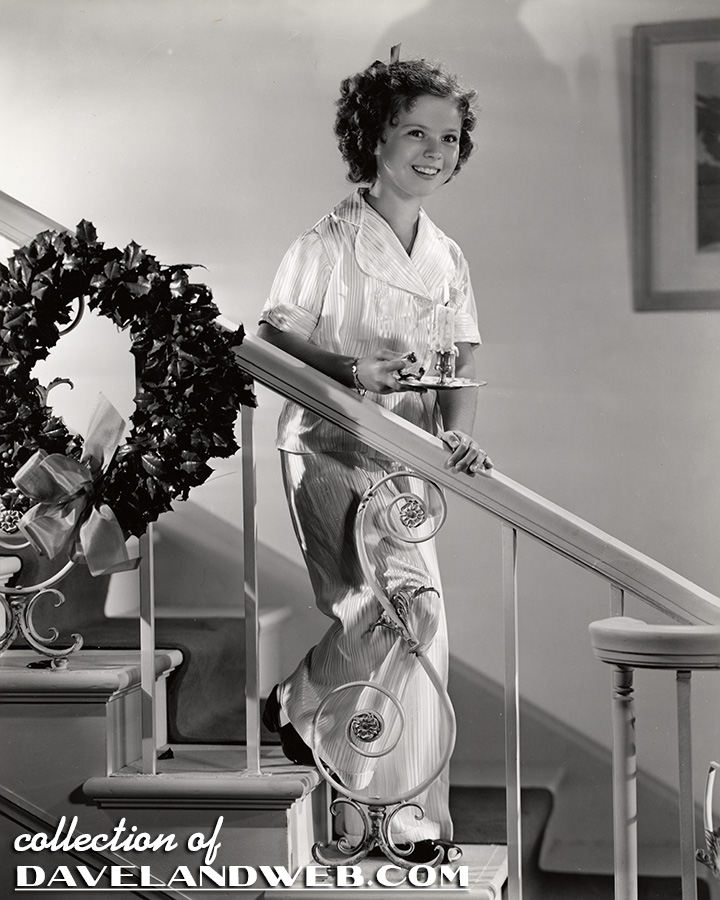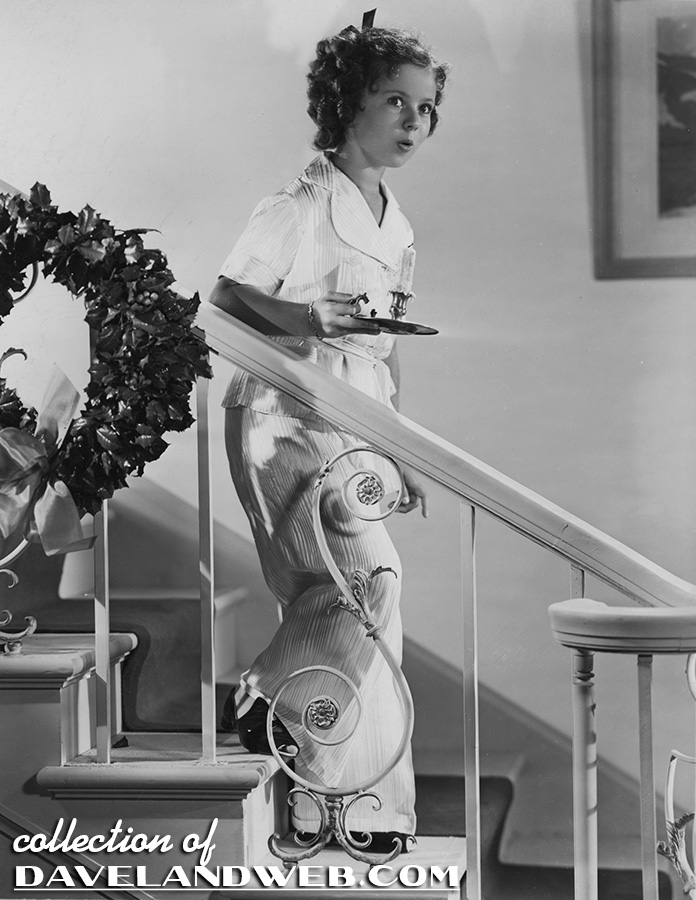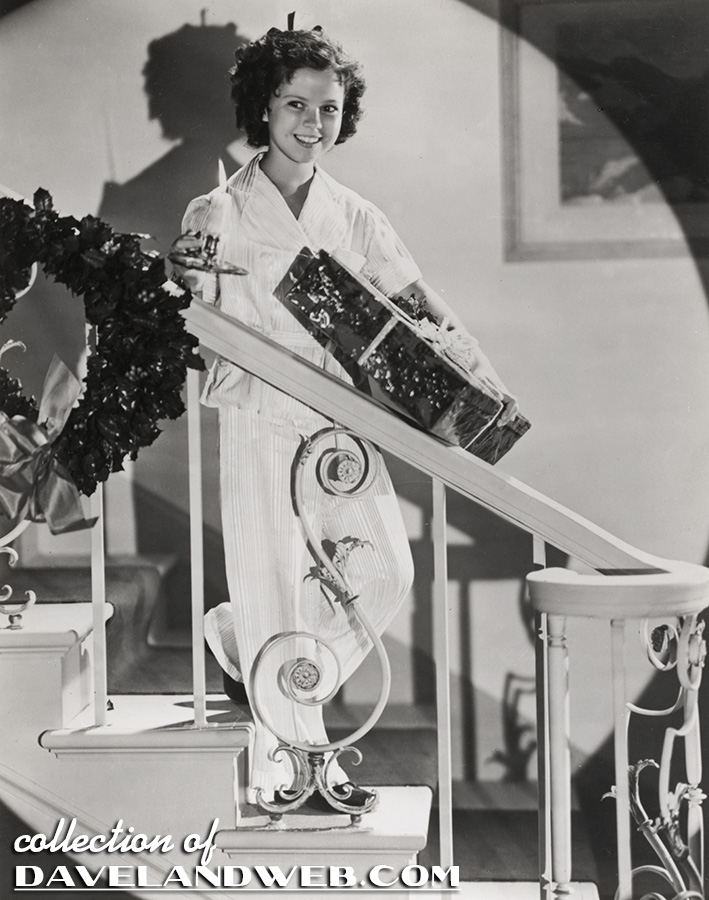
In 1939, Shirley Temple posed for her final Christmas photos at 20th Century-Fox. She would be temporarily retired by the time the next winter holiday rolled around. Even in the day before digital photography made it easy to take hundreds of photos without worrying about cost, the studio shot an abundance of the little girl in this session that attempted to capture the anticipation of awaiting Santa Claus’ visit on Christmas Eve. Taken at the studio, a staircase from props along with a wreath and some gifts gave a slight air of authenticity. I truly love the first one of Shirley pretending to be asleep while the silhouette of Santa looms behind her. Below, the wonder of seeing the tree and presents on Christmas morning is perfectly captured by Shirley’s expression:

A small candle in her hand lights the way:

Four additional shots of Shirley descending the steps are in my collection, showing that the studio liked giving the movie magazines options to choose from:




Hunting through the internet, I found three more:



Had enough Shirley yet? That’s ok, because we are moving on to Christmas 1970. Were my brothers and I dressed for a fancy dinner? No. This was the typical attire for a plane trip from Philadelphia to San Diego. Back in the day, plane travel was a luxury and one was expected to dress for the occasion. I was reading a book on the zodiac, and my oldest brother was apparently planning to practicing his clarinet while we visited our Grandmother in San Diego for Christmas.

Our United Airlines flight had actual curtains on the window!

Eldest brother was reading The Mystery of the Coughing Dragon, part of the Alfred Hitchcock mystery series:

Ah, to recall a time when plane travel was fun and you had room to squirm around in your seat.

The first order of business in San Diego was to visit Santa Claus at the May Company department store in Mission Valley. This modernist building had opened in February 1961. It is currently empty, most likely awaiting demolition.

Christmas Eve at my Grandmother’s fireplace shows our stockings (I still have mine) as well as the annual plate of Christmas cookies and note to Santa.

Note Marlboro 100s box in the background. No Christmas tableau is complete without it.

Christmas morning shows the genuine smiles as we were finally allowed to enter the living room to see what Santa had brought.

I hope you are all able to experience this form of happy anticipation and joy over the holidays and can disconnect from the stressors of 2025.
See more Shirley Temple at the holidays photos at my
main website.




























































